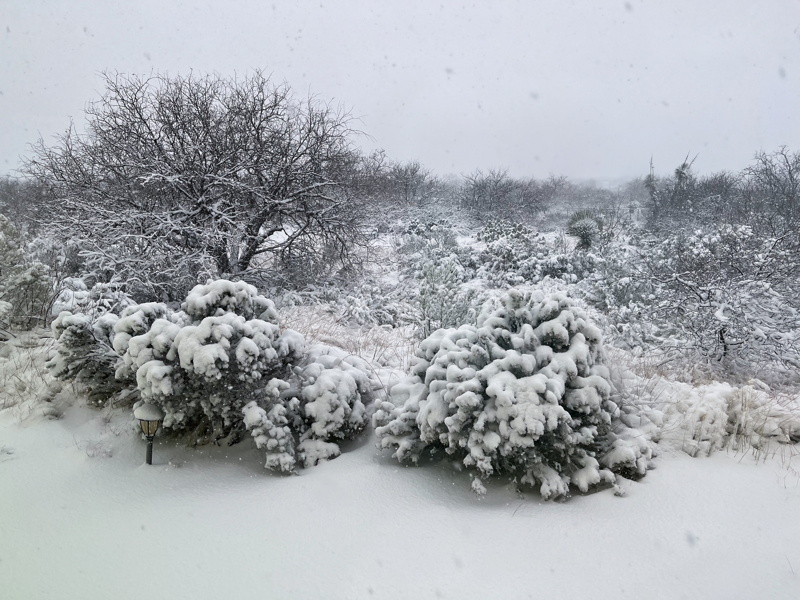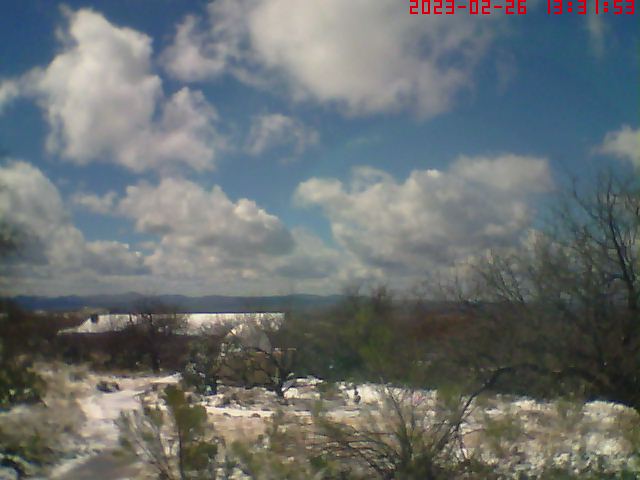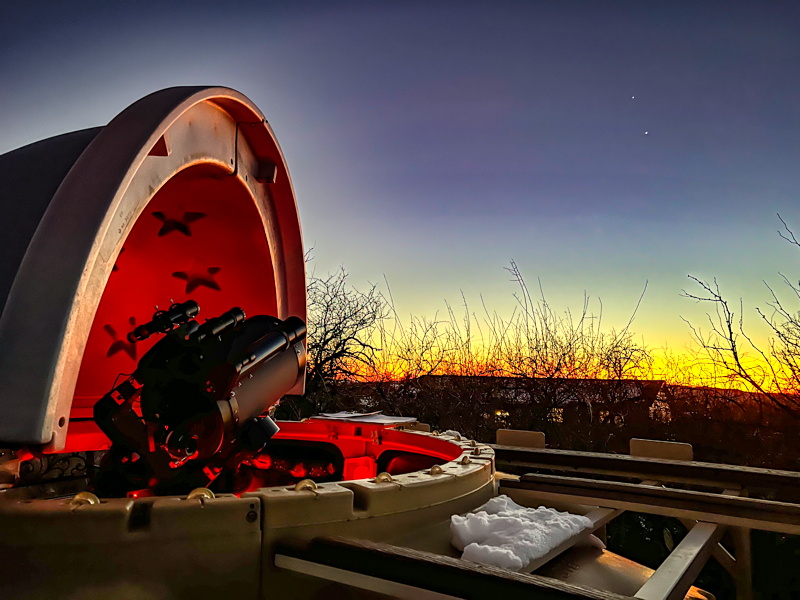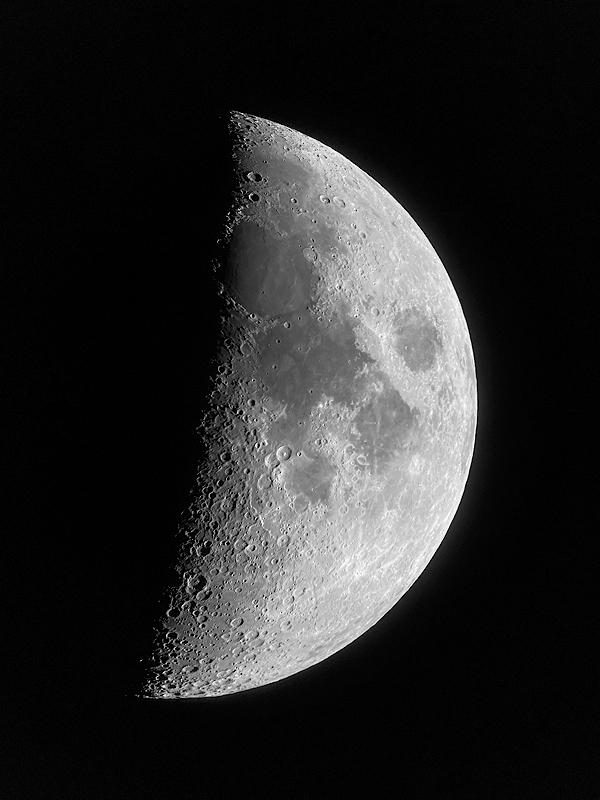Snow again, Jupiter & Venus,
Herschel 400 observing
Posted: 27 February 2023
Friday, 24 February 2023, dawned clear, but clouds began appearing mid-morning. With rain in the forecast beginning on the weekend, I put the Dome Cover ON. Friday at sunset there was a nice bright sundog.

Saturday afternoon, 25 February, the sky cleared. However, it was not until an hour after sunset that I could have opened the observatory. With snow in the Sunday morning forecast I decided to not remove the Dome Cover after dark and need to put it back on in the cold and dark.
Rain, which quickly turned to snow with periods of strong wind, began before sunrise Sunday, 26 February. Also had two power glitches and then a power outage 20 minutes later that lasted for 2 hours with the outside temperature 30°F. The electric company repairman found another line problem near the first problem and we lost power again after one hour that lasted 30 minutes. A permanent repair would be done on Monday; we'll lose power again then.


Click to view video
Snow stopped about 1130 MST with a snow accumulation of 3-3/4". The sky was partly cloudy by late afternoon and the snow rapidly melted (total precipitation was 0.25").

As sunset approached I went to the observatory.
|
Open: Sunday, 26 February 2023, 1808 MST Temperature: 39°F |
Session: 1837 Conditions: Mostly clear |
Equipment:
12" f/8 LX600 w/StarLock
2" 24mm UWA eyepiece
Camera:
iPhone 13 Pro Max
1815 MST: Dome Cover OFF.
1817 MST: Sunset.
SYNCed the observatory clock to WWV time signals.
1823 MST: LX600 ON, StarLock OFF, High Precision OFF.
Viewed Venus and then Jupiter, 102X. Venus was an obvious gibbous phase.
1832 MST: Viewed Jupiter and Venus, 12x50 binoculars. Both planets were in the same field-of-view and both planets showed small disks.
1834 MST: Viewed Jupiter and the Galilean Moons, 102X. Even though Jupiter was low in the western sky, this was the clearest view of Jupiter that I've had in several weeks. Seeing was always bad on previous nights.
1852 MST: Took this handheld iPhone 13 Pro Max photo of the 12" telescope pointed at Jupiter. Jupiter (top) and Venus (below) made a nice sight in the western sky. Some remaining snow is visible in the photo.

1908 MST: There was another power glitch. Fortunately, the observatory did not lose power as it is on the Tesla Powerwall backup circuit.
1917 MST: High Precision ON.
The First Quarter Moon was high in the sky so the sky was not very dark. I decided to observe some more Herschel 400 Catalog objects, 102X: NGC2022 (planetary nebula), NGC2024 (Flame Nebula), NGC2126 (open cluster), NGC2129 (open cluster), NGC2158 (open cluster), and NGC2169 (open cluster).
1938 MST: Viewed the Moon, 102X. Took this handheld afocal 102X photo of the Moon using the iPhone 13 Pro Max and the NightCap Camera app (ISO 34, 1/1250sec, 1X lens).

1942 MST: LX600 OFF.
|
Close: Sunday, 26 February 2023, 1950 MST Temperature: 37°F |
Session Length: 1h 42m Conditions: Clear |
I have posted my short book review of The Sky at Night.
Comments are welcome using Email. Twitter users can use the button below to tweet this report to their followers. Thanks.
Cassiopeia Observatory Home Page
Copyright ©2023 Michael L. Weasner / mweasner@mac.com. Email Etiquette.
URL = http://www.weasner.com/co/Reports/2023/02/27/index.html
